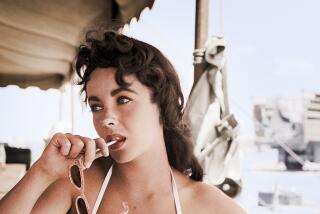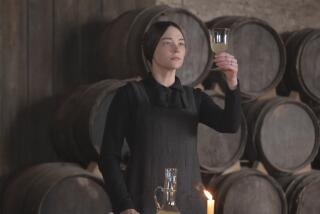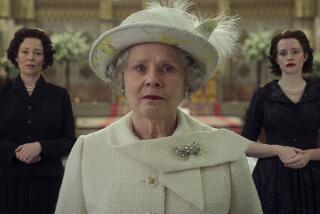FROM THE SAME CLOTH
- Share via
IF only Marie Antoinette had been the most photographed woman in the world, things might have turned out differently for her.
In the 39 years since French philosopher Guy Debord published “The Society of the Spectacle,” (33 since he made a movie of it), his argument about the societal shift from reality to spectacle, from “being into having” and from “having into appearing,” has been borne out in spades. Ironically, it’s increasingly left to the movies -- which enjoy the unique double ability to reproduce images and interpret the effects of their reproduction -- to tell us about it. Somebody has to do it, and Debord, may he rest, would be proud. Or suing for residuals.
It’s been a banner few months for movies about the downfall of the perpetually overexposed at the hands of an impassioned public; as well as for movies about how media can be manipulated to shape public opinion. Like the metadrama “Death of a President,” Stephen Frears’ sublime “The Queen” uses real news shots: Frears intersperses footage of Princess Diana into a fictionalized account of Queen Elizabeth II’s life in the week that followed the princess’ death. Watching it, however, I was continually reminded of “Marie Antoinette.”
Sofia Coppola’s movie about the last queen of France depicts a time when snark and celebrity hate-worship (there should be a German word for it) still had to be laboriously hand-cranked on a printing press, thereby lending it a certain precious quality much less likely to provoke weariness and mass ironic detachment. But in “The Queen,” in which E II R (the snappy monogram on the headrest of Her Royal Highness Queen Elizabeth II’s royal plane seat, which would make for a catchy nickname if she ever decided to capitulate and join the ranks of abstracted celebrity, possibly by getting herself photographed next to Diddy and Martha Stewart in the Hamptons) comes face to face with the tyranny of the thoroughly mediated mob.
If only M.A. had been so lucky. You can’t help but get the sense that the very things that got the young French royal hauled off to the Tuileries are much like the things that made the young English royal beloved in life and beyond. One of the most interesting things about “The Queen” is watching Elizabeth gradually realize that the public image of Diana was nothing like the Diana she knew, and that image rendered any private or subjective reality irrelevant.
“Marie Antoinette” and “The Queen” make a great double feature, or possibly a triple one. To view them in chronological order, strictly speaking, you’d have to see the one about the queen of France, then the one about the queen of England, then the one about the queen of France again.
Coppola’s “Marie Antoinette” could not exist if the changes that so confound E II R in Frears’ film hadn’t already taken place. Coppola reimagines M.A. through the prism of pop culture, presenting her as we’d see her if she were alive today -- as a postmodern princess and proto-celebrity whose downfall might have been averted if only she’d had the chance to go on TV and talk about her tragic isolation, her separation from friends and family, her marriage at 14 to a man who didn’t love her. She might have been admired for her glittery style, her vulnerability, her plain-folks frivolity, her help in distracting us from things that might make us angry, if the illusion of intimacy didn’t coax us to empathize. Had she been a creature of the 20th century, she might have been the “queen of people’s hearts” too, instead of the queen without a head.
More to Read
Only good movies
Get the Indie Focus newsletter, Mark Olsen's weekly guide to the world of cinema.
You may occasionally receive promotional content from the Los Angeles Times.










